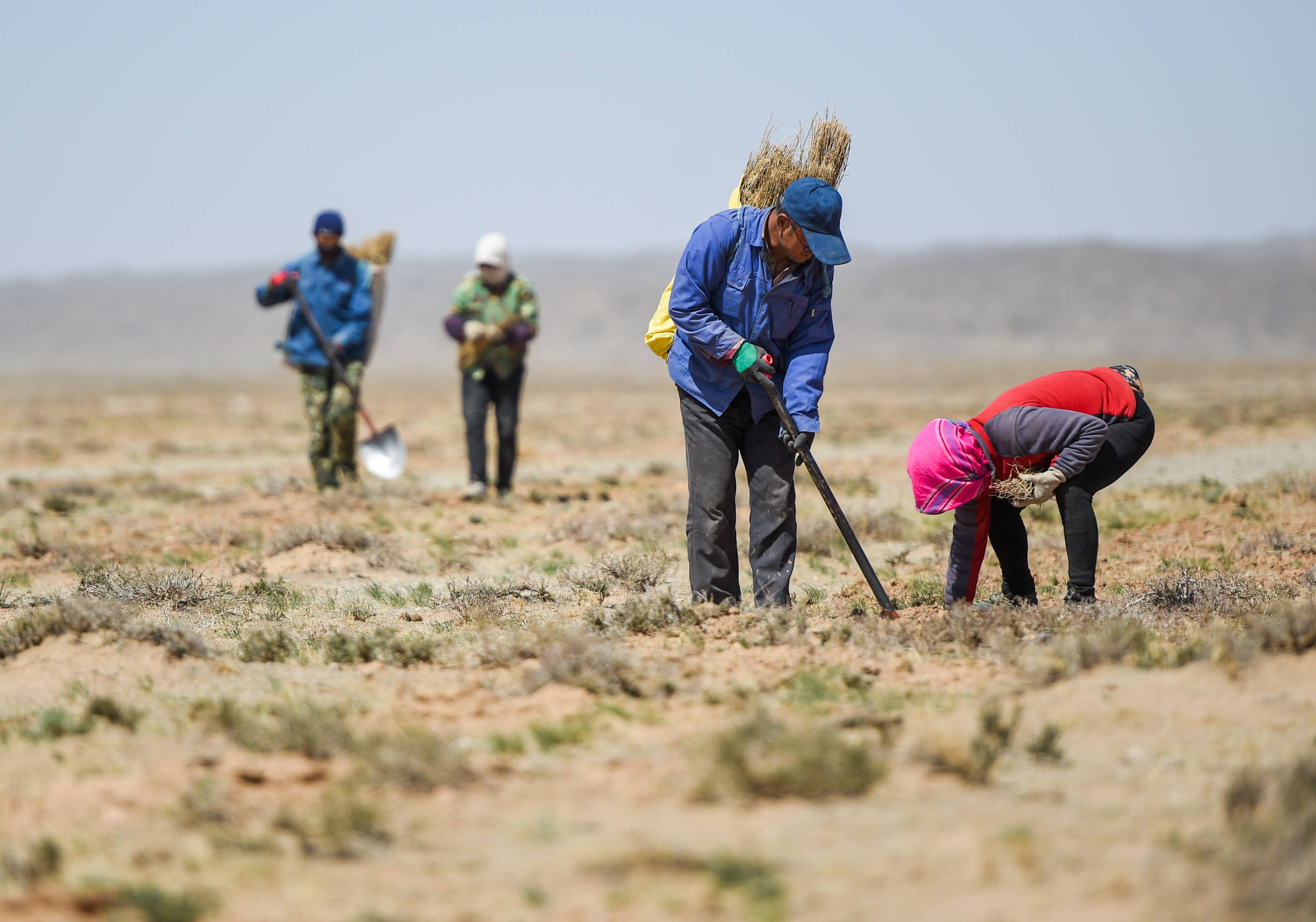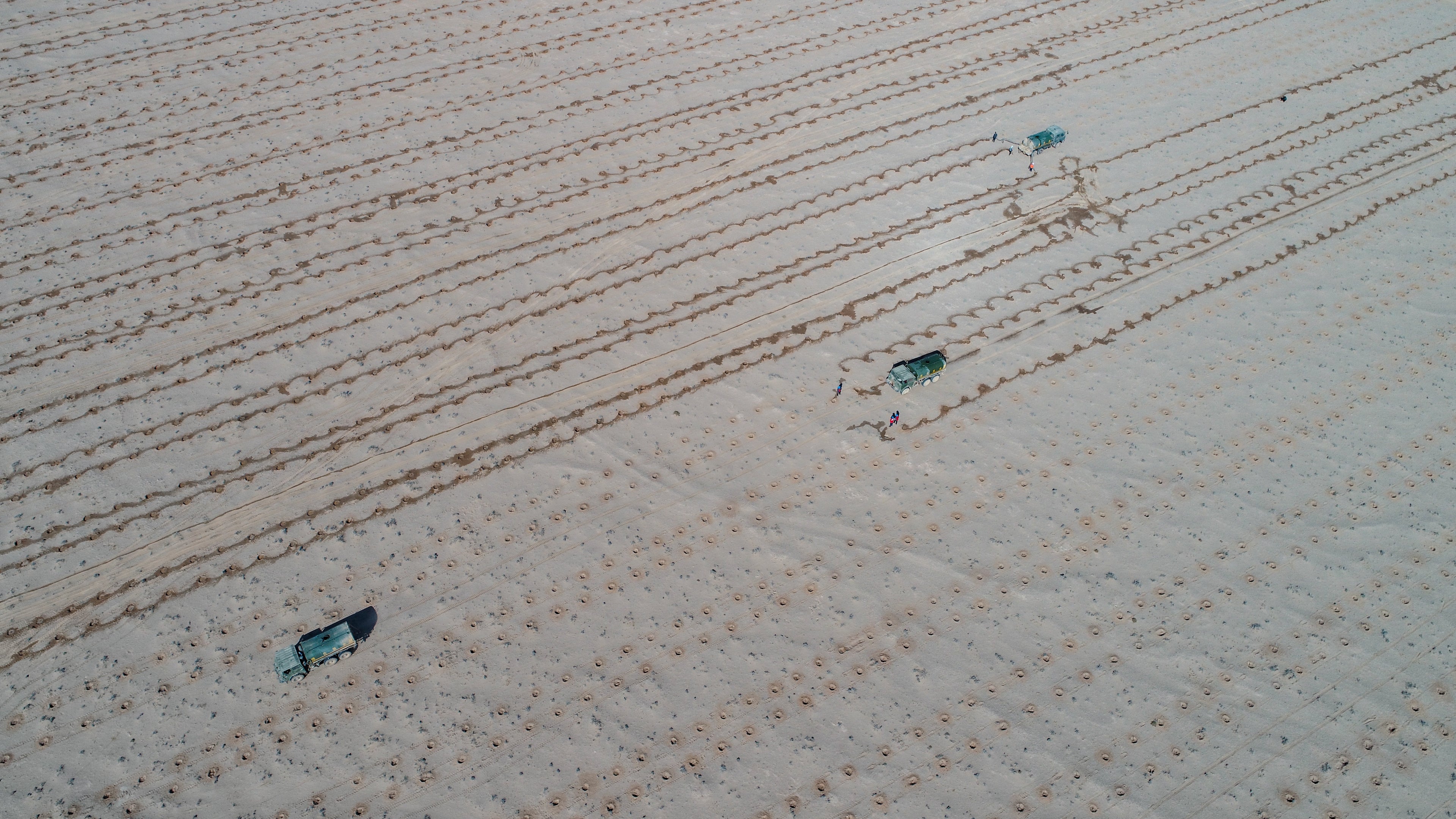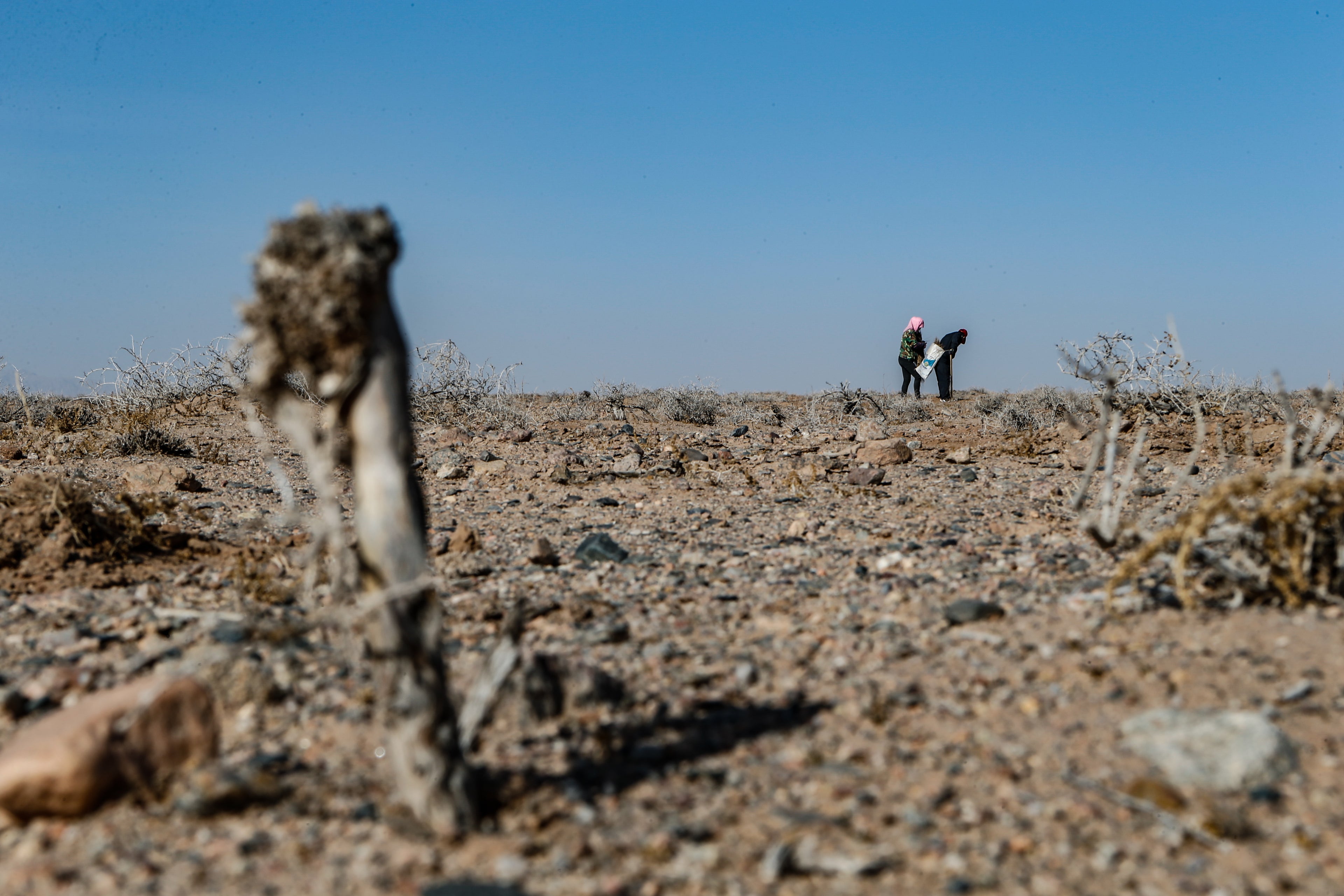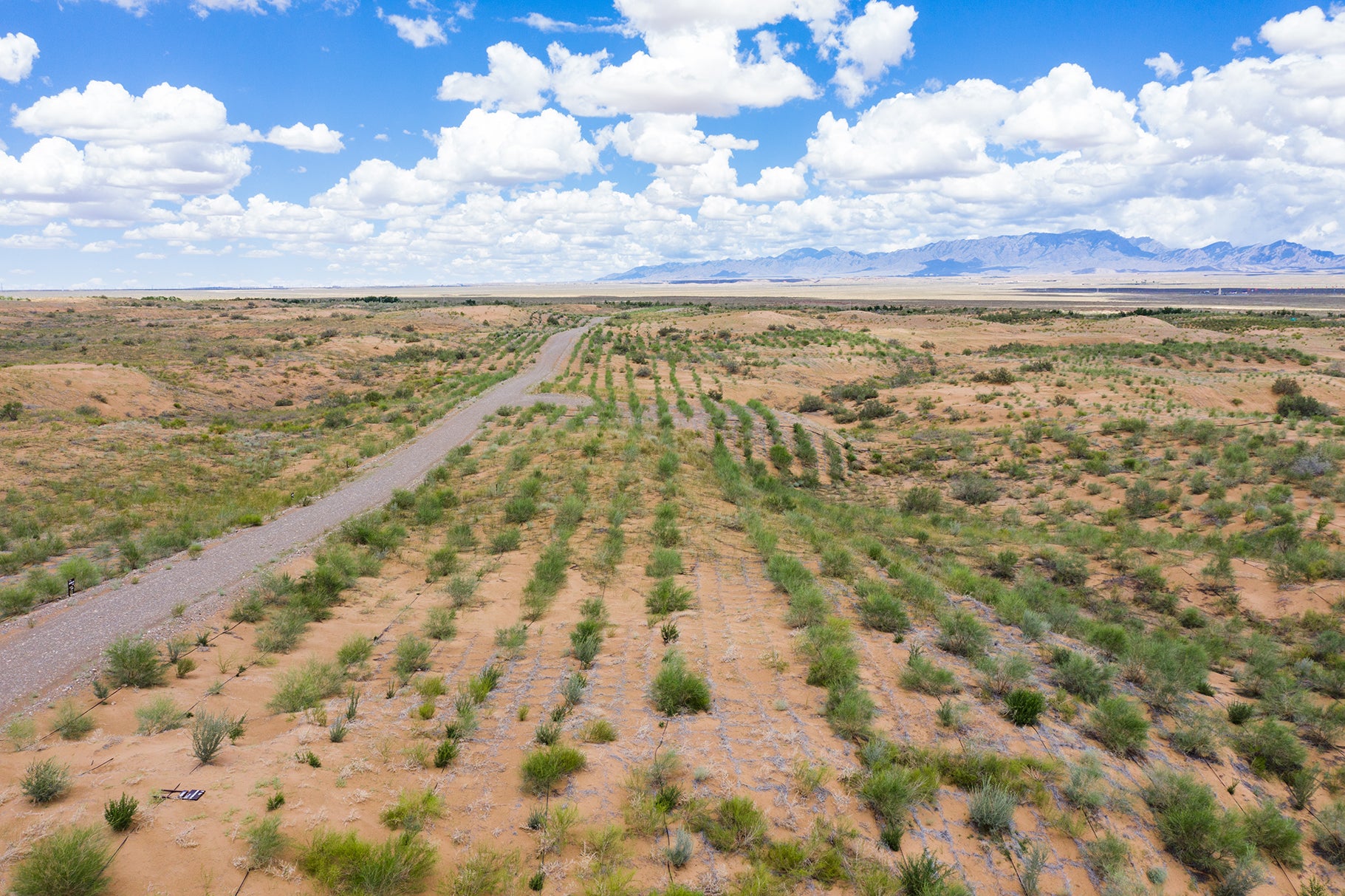




About This Project
Project Site Introduction
Minqin County, situated in northwest Gansu Province, China, is a beautiful oasis nestled between the Tengger and Badain Jaran Deserts. This county, covering 16,016 square kilometers, had a population of 274,300 by the end of 2010.
Due to diminished water conservation in the upper reaches of the Shiyang River and increased water usage in the middle reaches, surface water entering Minqin has drastically decreased from 590 million cubic meters in the 1950s to 100 million cubic meters in 2012. Consequently, desertification has become a significant issue, covering 94.5% of the county's land area. The desert's edge was encroaching on the oasis at a rate of 3 to 4 meters per year, forcing local residents to become ecological refugees.
About Haloxylon ammodendron(Suosuo Tree)
Haloxylon ammodendron, a vital sand-fixing plant, thrives in sandy environments and serves as livestock feed. Renowned for its drought resistance, heat tolerance, cold hardiness, and salt tolerance, Haloxylon ammodendron exhibits a salt content of approximately 15% in its stems and branches. It thrives in sunlight, is intolerant of shade, and boasts strong adaptability, rapid growth, dense branching, a well-developed root system, and exceptional wind-proofing and sand-fixing capabilities. Consequently, it's an ideal tree species for sand-fixing and afforestation in the arid desert regions of Northwest China and Inner Mongolia.
While Haloxylon ammodendron exhibits rapid branch growth, averaging 30-40 centimeters annually and exceeding 50 centimeters in years with abundant rainfall, its regeneration capacity is relatively weak.
Project Ecological Achievement
Minqin County has successfully afforested over 2.3 million mu (approximately 153,333 hectares), with more than half of it dedicated to sand fixation afforestation. Additionally, over 3.25 million mu of natural sandy vegetation has been enclosed and protected. Along the 408-kilometer wind-eroded land, a protective forest belt spanning over 300 kilometers has been established. As a result of these efforts, the county's forest coverage has significantly increased from 3% in the 1950s to 18.28%."







